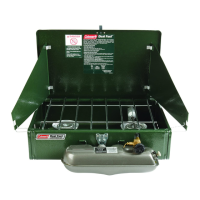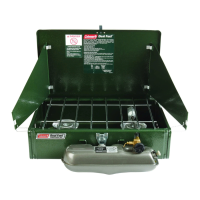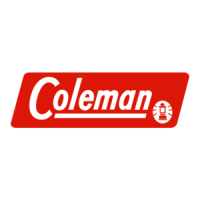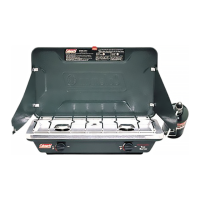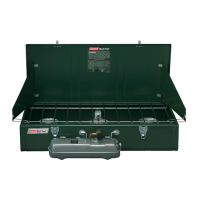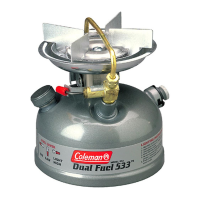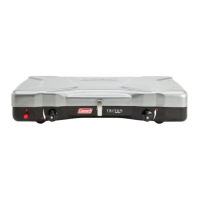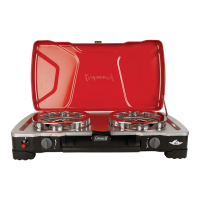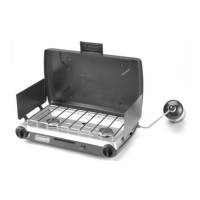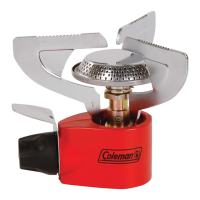Cleaning your Stove
A cleaner Coleman stove works better and looks better. The benefits of regular
cleanings include better fuel efficiency, flame control and no rust or corrosion.
Although there isn't a set schedule for cleaning your stove, you should clean it whenever
it is dirty or after a boil-over that causes build-up in the burners. Annual cleanings are
recommended before storing your stove at the end of camping season.
Under most conditions, stoves can be wiped out with warm water and dishwashing soap
and then dried before storing. For a deeper cleaning, here are a few suggestions:
If there has been a boil-over, remove the screw from the centre of each burner and
lift off the burner rings and bowl to check the manifold for fluid or food debris. If
there is a build-up, clean it with dishwashing soap and warm water before rinsing
with clean water.
If the stove has a massive amount of grease and dirt build-up inside the case, on
the grill or burners, you can take the stove to a car wash and use a high-pressure
hose on it. Don't use any type of tire, oven or engine cleaner because it can
damage the paint on the inside of the case and the metal of the grate and manifold.
If a stove has been cleaned with any type of water hose, turn the stove upside
down to ensure all the water is removed from inside the manifold. Any water left
inside the manifold can cause it to rust and disturb the flow of fuel to the burner,
preventing the stove from burning properly.
After cleaning, proper storage of your Coleman stove is also important.
Put it into a plastic bag, sealing with a twist tie to prevent spiders or other insects
from crawling in the unit, which can block the fuel and airflow.
With a liquid fuel stove, transfer as much fuel as possible out of the fuel tank and
back into the fuel can to prevent a lacquer build-up on the tank's fuel tube. Keep
in mind that storing a liquid fuel appliance with fuel in the tank can eventually
cause a build-up on the fuel tube, which restricts fuel flow to the generator and
burner.
When it's time to take out your stove, remember to oil the pump cup on the tank's
pump plunger at least twice a year with light machine oil. This allows the cup to
seal against the inside of the pump barrel and insures the pump will work
smoothly and push air into the tank properly.
ew fuel bottles requi
e warning labels and child-resistant caps to meet
Health Canada regulations. Be aware that the new, aluminium water
ottles may resemble older fuel bottles, and care must be taken not to get
them confused.
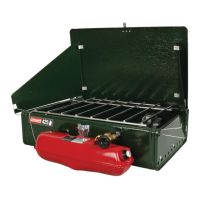
